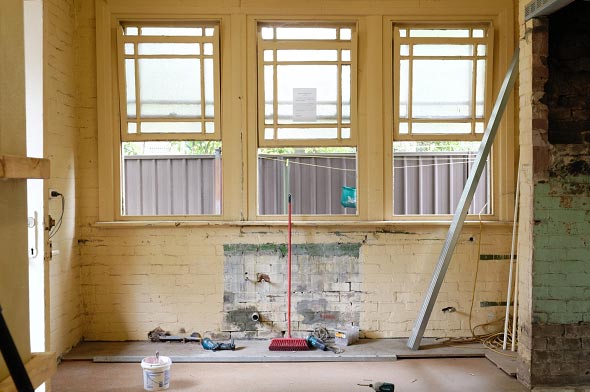Do's & Don'ts of Water Restoration.
Do's & Don'ts of Water Restoration.
Blog Article
Just how do you feel with regards to Safety Tips To Prevent Fire And Water Damage?

Though water offers life, water intrusion on components where it's not meant to be can result in damages. It can peel off away surface areas and also wear down the foundation if the water soaks right into your structure. Mold and mildew and mold likewise thrive in a damp atmosphere, which can be harmful for your wellness. Houses with water damages scent mildewy as well as old.
Water can come from many sources such as hurricanes, floodings, ruptured pipelines, leaks, as well as sewage system concerns. In case you experience water damages, it would certainly be great to understand some safety and security preventative measures. Here are a couple of standards on exactly how to deal with water damages.
Do Prioritize Residence Insurance Coverage Coverage
Water damage from flooding as a result of hefty winds is seasonal. However, you can likewise experience a sudden flooding when a damaged pipeline unexpectedly bursts right into your house. It would be best to have house insurance coverage that covers both acts of God such as all-natural disasters, and emergency situations like damaged plumbing.
Do Not Forget to Shut Off Utilities
This reduces off power to your entire home, preventing electric shocks when water comes in as it is a conductor. Do not forget to turn off the main water line valve.
Do Stay Proactive as well as Heed Weather Condition Informs
Listen to emptying warnings if you live near a lake, river, or creek . Doing so reduces prospective residential property damages.
Do Not Neglect the Roof
Prior to the weather turns terrible, see to it you have a roof inspection. As a matter of fact, it would be prudent to obtain this solution yearly as it can minimize intricate issues. If there are no holes and leakages in your roof, you can stay clear of rain damages. Your roofing contractor will additionally care for defective seamless gutters or any other signs of weakening. This will prevent water from flowing down your wall surfaces as well as soaking your ceiling.
Do Focus On Small Leaks
A burst pipeline does not occur over night. Generally, there are red flags that suggest you have damaged pipelines in your house. For instance, you may see gurgling paint, peeling off wallpaper, water touches, water spots, or leaking audios behind the wall surfaces. At some point, this pipe will rupture. Ideally, you should not wait for points to rise. Have your plumbing repaired prior to it causes large damage.
Don't Panic in Case of a Ruptured Pipe
Keeping your clearheadedness is essential in a time of dilemma. Worrying will only worsen the issue because it will certainly stifle you from acting quickly. Timing is essential when it comes to water damages. The longer you wait, the even more damage you can expect. Hence, if a pipe bursts in your home, instantly shut off your main water shutoff to cut off the resource. Unplug all electrical outlets in the location or transform off the circuit breaker for that component of the residence. Ultimately, call a reputable water damage reconstruction specialist for help.
Water offers life, water intrusion on components where it's not intended to be can result in damage. Residences with water damages odor stuffy as well as old.
Water damage from flood fees to heavy winds is seasonal. You might see bubbling paint, peeling off wallpaper, water touches, water discolorations, or dripping noises behind the walls. When it comes to water damages, timing is essential.
Some Do's & Don't When Dealing with a Water Damage
DO:
Make sure the water source has been eliminated. Contact a plumber if needed. Turn off circuit breakers supplying electricity to wet areas and unplug any electronics that are on wet carpet or surfaces Remove small furniture items Remove as much excess water as possible by mopping or blotting; Use WHITE towels to blot wet carpeting Wipe water from wooden furniture after removing anything on it Remove and prop up wet upholstery cushions for even drying (check for any bleeding) Pin up curtains or furniture skirts if needed Place aluminum foil, saucers or wood blocks between furniture legs and wet carpet Turn on air conditioning for maximum drying in winter and open windows in the summer Open any drawers and cabinets affected for complete drying but do not force them open Remove any valuable art objects or paintings to a safe, dry place Open any suitcases or luggage that may have been affected to dry, preferably in sunlight Hang any fur or leather goods to dry at room temperature Punch small holes in sagging ceilings to relieve trapped water (don't forget to place pans beneath!); however, if the ceiling is sagging extremely low, stay out of the room and we'll take care of it DO NOT:
Leave wet fabrics in place; dry them as soon as possible Leave books, magazines or any other colored items on wet carpets or floor Use your household vacuum to remove water Use TV's or other electronics/appliances while standing on wet carpets or floors; especially not on wet concrete floors Turn on ceiling fixtures if the ceiling is wet Turn your heat up, unless instructed otherwise

As an enthusiastic reader on Preventing Fires and Water Damage In Your Home, I think sharing that article was smart. Appreciated our content? Please share it. Let somebody else check it out. I praise you for your time. Please check up our blog back soon.
Report this page